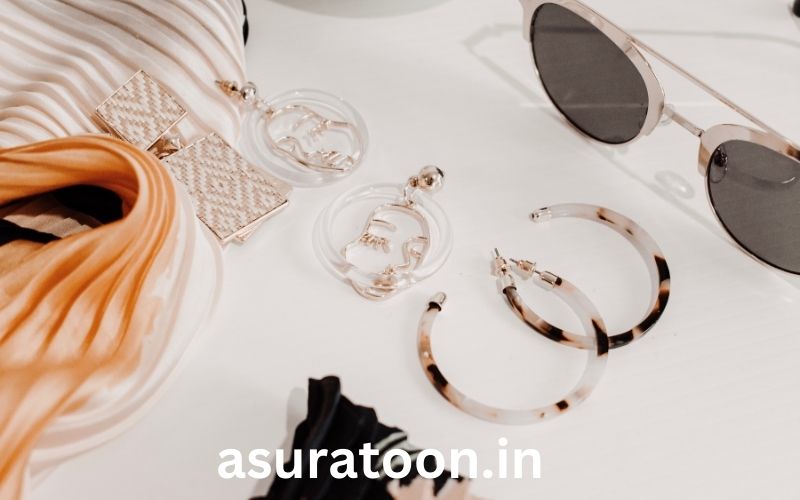Negative canthal tilt is a term used in facial aesthetics to describe the downward slant of the eyes. This condition affects how the eyes are positioned on the face, making them appear to slant downward towards the outer corners. The tilt can create an asymmetrical look or be a natural part of someone’s facial structure. While many people may not be aware of this tilt, it can have significant implications for one’s appearance and self-esteem. It can also be linked to certain health conditions.
Understanding the underlying causes, consequences, and available treatments for negative canthal tilt is essential for anyone experiencing it or considering changes to their appearance. This blog post will explore all aspects of negative canthal tilt in detail, answering common questions and providing helpful insights.
Key Points:
- Negative canthal tilt refers to the downward slant of the eyes’ outer corners.
- It can be caused by genetics, aging, or medical conditions.
- There are several options for correcting or managing this condition.
What Is Negative Canthal Tilt?
Negative canthal tilt describes the position of the eyes, where the outer corners (canthi) are lower than the inner corners. This downward slant gives the eyes a “sad” or “tired” appearance. In contrast, a neutral or positive canthal tilt has a more horizontal or upward angle, giving a youthful and alert look.
The tilt itself is not necessarily a problem but can be a source of concern for those who feel it negatively impacts their appearance. The condition is more noticeable in individuals with a significant tilt, while some may have a mild version that is hardly noticeable.
Causes of Negative Canthal Tilt
Several factors can contribute to the development of negative canthal. Some are natural, while others are related to lifestyle or health conditions.
- Genetics: Some individuals are born with a naturally downward slant in the canthi. This genetic trait can affect both the position of the eyes and overall facial appearance.
- Aging: As people age, the muscles around the eyes can weaken and the skin can sag, causing the outer corners of the eyes to droop. This can lead to a more pronounced negative canthal.
- Health Conditions: Certain conditions, like eyelid ptosis or facial nerve paralysis, can lead to changes in the eye’s position. Other medical factors like excessive sun exposure, smoking, and poor hydration can also contribute to skin aging, which may exacerbate the condition.
How Does Negative Canthal Tilt Affect Appearance?
The appearance of negative canthal can alter a person’s facial aesthetics. In particular, it affects the following aspects:
- Facial Symmetry: Negative canthal tilt can lead to facial asymmetry, as one side of the face may look more droopy than the other. This can create an unbalanced or uneven look.
- Expression: With a downward slant, the eyes can appear more sad, tired, or angry. This may not align with how the person feels emotionally, leading to a disconnect between appearance and expression.
- Aging Appearance: Since canthal tilt is often linked to aging, it can make a person appear older or fatigued. This can influence one’s self-esteem or confidence.
How Is Negative Canthal Tilt Diagnosed?
A trained professional, such as a plastic surgeon or an ophthalmologist, can diagnose canthal tilt during a physical examination. They will analyze the positioning of the eyes, the skin around them, and overall facial structure. In some cases, imaging tests may be used to measure the angle of the canthi and assess the degree of tilt.
Note: It’s important to consult with a professional if you’re concerned about the appearance of your eyes.
Can Negative Canthal Tilt Be Corrected?
Yes, negative canthal tilt can be corrected in a variety of ways. Some methods involve surgical interventions, while others are non-invasive. Here are some options:
- Surgical Correction: One of the most effective treatments for canthal tilt is surgery. A procedure called canthoplasty can be performed to reposition the outer corners of the eyes. This surgery is typically done by a plastic surgeon and can improve both appearance and functionality.
- Botox Injections: In some cases, botox injections can be used to temporarily lift the outer corners of the eyes. Botox works by relaxing the muscles around the eyes, lifting the skin and giving the eyes a more youthful appearance.
- Thread Lifts: Thread lifts involve inserting tiny threads under the skin to create a lifting effect. This procedure can subtly correct a negative canthal without the need for major surgery.
- Non-Surgical Alternatives: For those who don’t want to undergo invasive procedures, makeup and cosmetics can provide a temporary solution. Properly applied eyeliner and eyeshadow can create the illusion of an upward tilt.
Comparison of Surgical vs. Non-Surgical Options
| Treatment | Type | Duration | Cost | Risk Level |
| Canthoplasty | Surgical | Permanent | High | Moderate to High |
| Botox Injections | Non-Surgical | Temporary (3-6 months) | Moderate | Low |
| Thread Lifts | Non-Surgical | Temporary (6-12 months) | Moderate to High | Low |
Note: Always consult with a specialist to determine the best approach for your unique situation.
Are There Any Risks Involved?
Like any medical or cosmetic procedure, there are potential risks associated with the correction of negative canthal. Surgical interventions carry risks such as scarring, infection, and anesthesia complications. Non-invasive procedures like Botox and thread lifts are generally safe, but they can lead to temporary bruising, swelling, or dissatisfaction with the results.
Reminder: Always choose a qualified, experienced professional for any corrective procedures.
Conclusion
Negative canthal tilt can have both aesthetic and emotional impacts on an individual, as it affects how the eyes and face are perceived. While some people may embrace their natural appearance, others may seek correction through medical or cosmetic procedures. Understanding the causes, effects, and available treatments can help you make an informed decision about whether you want to change your look. Whether through surgery, injections, or simple makeup tricks, there are ways to address negative canthal and achieve the appearance you desire.
FAQ’s
1. Is negative canthal tilt a common condition?
Yes, it is relatively common. Many people have some degree of negative canthal tilt due to aging or genetics.
2. Can negative canthal tilt be corrected without surgery?
Yes, non-surgical treatments like Botox or thread lifts can help lift the outer corners of the eyes temporarily.
3. Is the canthoplasty procedure safe?
While canthoplasty is generally safe, it does carry risks such as scarring and infection. Consulting with a qualified surgeon is essential.
4. Does negative canthal tilt make me look older?
Yes, negative canthal tilt can contribute to an older or more tired appearance, as it is often associated with aging.
5. Can makeup help with negative canthal tilt?
Yes, makeup techniques such as eyeliner and eyeshadow can create the illusion of a more neutral or positive canthal tilt.




